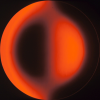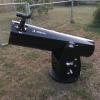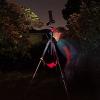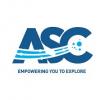I know that the consensus favors a disc used for a contact point. However lets ignore that for the time being. I ask you all, what is the best geometry for pad design, given the single constraint that nylon or teflon is used for the material? I posit that virtually any design using flat pads, once fabricated will yield contact points varying wildly from the original design. So that is to say, even if PLOP is applied correctly and the cell is fabricated with precision, the contact pints will wind up being off by as much as the radius of the individual pads. Why? It is exceedingly difficult to manufacture three planes with anything approaching a true coplanar state.
What say you?
You're right in specific, so the contact points should either be a) small, so the error is position is also tiny, or b) floating, so the plane of the pad automatically alligns with the plane
of the back surface of the mirror.
Most people use a more compliant material, like cork or felt, as the pad material because the mirror is transported in the cell. This could result in the inaccuracies you mention.
However, though PLOP doesn't allow you to move the points slightly, it's obvious that having the pressure points vary from the PLOP positions by a tiny amount has two issues:
1) the flexure as seen in the graphical representation would not longer be completely symmetrical
2) it's possible that some points on the mirror might deviate a couple nanometers more than the pure PLOP design.
Is that significant? Well, not when a very very good mirror yielding 1/10 wave error on the wavefront means a deviation of 55 nanometers (and that could be +/-)! Adding even 5 nanometers to that is insignificant. There is a much larger difference in surface errors by changing from 3 to 6 to 9 to 18 points of support than there is in having the points be slightly in error as to their positions.
As Mark says: you're over-thinking it.



























